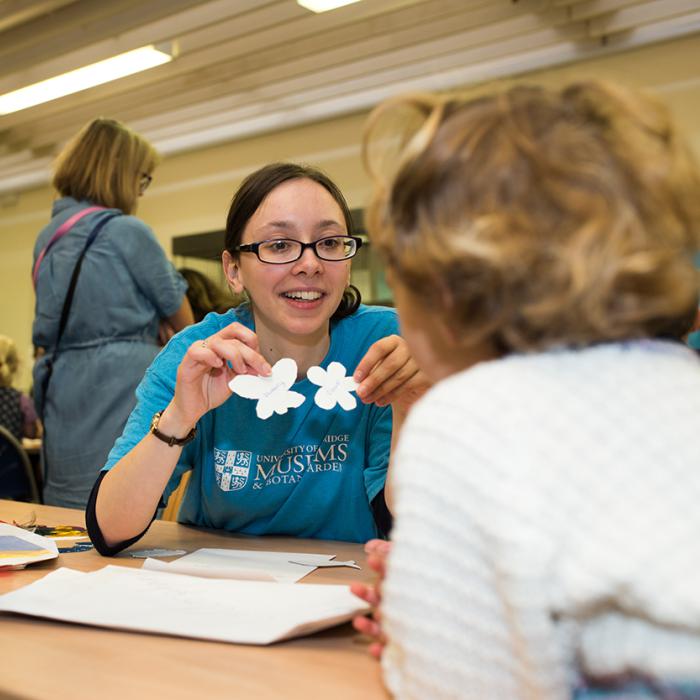Discover Lucie Rie’s ground-breaking and unique ceramic practice, which made her one of the most significant potters of the twentieth century.
This tour is suitable for blind and visually impaired visitors. The tour is delivered in person, by members of the Kettle’s Yard learning team and will include time within the exhibition spaces.
FREE, booking required. Each ticket covers 2 people.
Image: Jo Underhill
Discover complex, intriguing and challenging stories about power within our collections.
Join us for The Power Walk series - an opportunity to share and exchange stories and ideas linked to the University of Cambridge Museum's investigation of the legacies of empire and enslavement, power and memory with our communities and audiences.
Visit the Museum of Zoology after-hours.
Wander specially lit galleries after closing, take part in mindful making activities and enjoy the laid back atmosphere of the Museum after-hours with friends. Plus try out your moves at the Silent Disco in the bird gallery.
Ticket price includes one free soft drink or a discount off one wine, beer or cocktail drink
This event has been devised in collaboration with the Museum's pilot Youth Collective.
Nicolette Jones’s illustrated talk will consider the themes, techniques and importance of Briggs’s work, his sense of fun, and her own memories of working with him. Jones is co-curator of the exhibition and the author of two books about Briggs – Blooming Books (Cape) and The Illustrators: Raymond Briggs (Thames & Hudson).
What were the traditions of Christmas books for children that led to Raymond Briggs’s glorious landmarks Father Christmas, Father Christmas Goes on Holiday, and The Snowman? This talk will discuss these inherited traditions alongside Briggs’s enduring classics for the holiday season.
‘Below painting comes illustration … below that comes cartoons … then, below the gutter, are the sewers – strip cartoons! Comics! Ugh! The very cesspits of non-culture.’ - Raymond Briggs
Welcome to the perfect opportunity to show your creativity in a unique setting. Pencils, wine, and an inspiring gallery open late… It can only mean that drink and draw is back!
Join us for a relaxed and friendly evening of sketching amongst our awesome sculptures. You’ll be welcomed with a glass of wine and our expert instructors will offer you guidance to build your confidence and skills.
Each session will have a 40-minute talk followed by a chance to chat with the experts and your fellow attendees over a cuppa. For this session our theme will be heroic objects of Antarctic exploration.
For ages 16+
Meet and Make at the Museum sessions are all about giving you a supportive and social space to be creative. Making new crafts, making space for yourself, and making new connections. A chance for you to explore working with different materials and learn new skills with others. This session we will explore the polar oceans and making ocean scenes using quilling papercraft.
For ages 16+
Meet and Make at the Museum sessions are all about giving you a supportive and social space to be creative. Making new crafts, making space for yourself, and making new connections. A chance for you to explore working with different materials and learn new skills with others. This session we will be exploring penguins and making penguin finger puppets. Basic sewing skills required for this session.
For ages 16+

